
Enduring Acequias: Wisdom of the Land, Knowledge of the Water
Read about acequias as part of our June 2021 book club, and attend a live conversation with Eric Gordon and Eugene Jacquez about the topic on June 8, 2021 at 4pm Mountain Time live on our Facebook page. Enduring Acequias: Wisdom of the Land, Knowledge of the Water by Juan Estevan Arellano. For generations the Río Embudo…
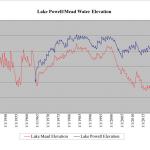
Water level history for Lakes Powell/Mead
The graph shows the water level history for Lake Powell and Lake Mead. Forecasts thru 2022 are provided by the U. S. Bureau of Reclamation. Despite cutbacks in the reservoir outflows, the drop in water levels shows the results of decreased precipitation in the southwest over recent years.
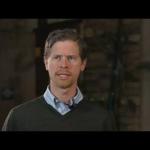
What Does the Future Hold?
In the final video lecture of the series, Eric Gordon and Anne Gold from CIRES wrap up the series by giving an overview of the previous lectures and discussing possibilities of future challenges facing water in the west.

Doing More With Less: Water Conservation and New Supplies in Las Vegas
In this part of the Water in the Western US lecture series, Eric Gordon from the University of Colorado Boulder discusses the rapid growth of Las Vegas and the history of its water use. This western water story can help us learn about how desert towns can improve their water sustainability.

Physical Attributes of the Colorado River and Experimental Flows in the Grand Canyon
This lecture by Dr. Jack Schmidt from Utah State University gives an overview on the physical attributes of the Colorado River and how that affects river restoration. This video is part of the Water in the Western US lecture series.
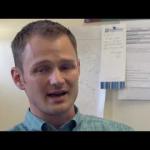
The Colorado River Basin Water Supply and Demand Study
In this lecture, Dr. Ken Novak from the US Bureau of Reclamation examines a case study on the water supply and demand of the Colorado River Basin. Learn about how increasing demand for water affects reservoirs and other infrastructure. This is part of the Water in the Western US lecture series.
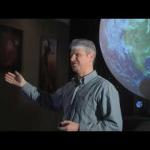
Climate and the Colorado River Basin Past, Present, and Future
This video features Jeff Lukas from CIRES' Western Water Assessment who discusses the overall climate patterns of the Colorado River Basin, and how we can use this information to study the past, present, and future climate of the western United States. This video is part of the Water in the Western US lecture series.
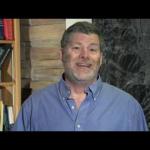
History of Development of the Colorado River Basin
In this video, Dr. Paul Lander from the University of Colorado Boulder gives a lecture on the history of two important dams: Hoover and Glen Canyon. This is part of the Water in the Western US lecture series.
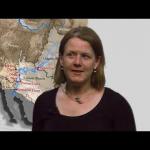
Geographic and Physical Overview of the Colorado River Basin
CIRES' Anne Gold delivers a lecture on the physical geographic overview of the Colorado River Basin and the legal and political aspects of water management in the west. This is part of the Water in the Western US lecture series.

Water Demand for Urban Areas
In this lecture, Dr. Joanna Endter-Wada from Utah State University discusses water demand for urban areas. Learn about the nature of urban water demand, urban water management, and more. This is part of the Water in the Western US lecture series.
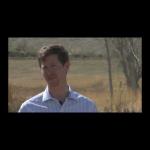
Impacts of Climate Change in the Interior West
This video features Eric Gordon, who delivers a lecture on the effects that climate change will have on water in the Western United States. This is part of the Water in the Western US lecture series.
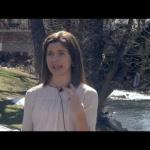
River and Flash Flooding
Research scientist Dr. Kelly Mahoney explores rivers and flash flooding in the west. This video covers different kinds of floods, what causes flash flooding, why flash flooding is more of a risk in the Western US, and what happened in the 2013 Front Range floods. This video is part of the Water in the Western US lecture series.
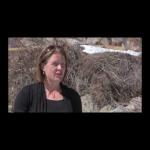
Water Quality, Aquatic Habitat, and Drinking Water
This lecture by Dr. Anne Gold discusses water quality challenges in the Western United States and how that affects aquatic habitats and drinking water. This video covers streamflow, salinity, pollution, sediment load, and more. This video is part of the Water in the Western US lecture series.

Prior Appropriation
In this video, Assistant Attorney General Kate Ryan from the Colorado Supreme Court gives an overview of water rights across the Western US and the Prior Appropriation Doctrine. Learn why this doctrine is important for learning about water in the west. This video is part of the Water in the Western US project.
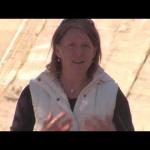
Water Storage and Delivery Infrastructure
In this video, Dr. Anne Gold from CU Boulder explains the importance of infrastructure for the storage and delivery of water in the dry Western United States. Learn all about the history of this infrastructure and how it has helped societies in the Western United States. This video is part of the Water in the Western US lecture series.
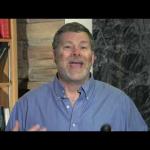
History and Development of Water in the West
Dr. Paul Lander from the University of Colorado Boulder gives a lecture on the history of water resources in the Western United States, from the pre-colonial time period onward. This video is part of the Water in the Western US lecture series.

Review of the Water Cycle (with a focus on the Western US)
In this video Dr. Anne Gold and Eric Gordon give a brief review on the different processes involved in the water cycle, specifically in the Western United States.
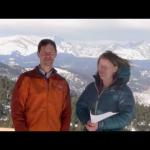
Geography of the West
Eric Gordon and Dr. Anne Gold give an overview on the geographic features that define the Western United States, both physical and political.

Why Study Water in the West?
This video serves as an introduction to the Water in the Western US lecture series. The instructors Dr. Anne Gold and Eric Gordon explain the importance of learning about water in the Western United States.
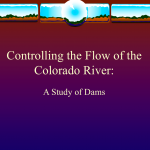
Controlling the Flow of the Colorado River
Students will learn about the Colorado River and human efforts to control water flow. Students will then research other water management efforts throughout the country and report their findings.
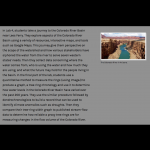
Sharing a River - The Colorado River Story
In Lab 4, students take a journey to the Colorado River Basin near Lees Ferry. They explore aspects of the Colorado River Basin using a variety of resources, interactive maps, and tools such as Google Maps. This journey give them perspective on the scope of the watershed and how various stakeholders have siphoned the water from the river to serve…

Drought in the Colorado River Basin
This application was developed by the U.S. Geological Survey and the Bureau of Reclamation in support of the Department of the Interior’s Open Water Data Initiative (OWDI). This visualization is part of a multi-agency effort to showcase the usefulness of open data (i.e., data provided in a discoverable, sharable, and machine-readable…
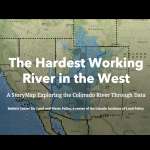
The Hardest Working River in the West
This is a StoryMap on the Colorado River. The story map details the history of the Colorado River, water resources, river management, and tools for managing in the future.
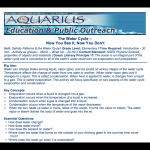
The Water Cycle: Now You See It, Now You Don't
This lesson is an instructor demonstration that focuses specifically on two aspects of the water cycle: evaporation and condensation. This is a well described instructor led demonstration for introducing and exploring the water cycle. This activity takes approximately 1 hour 35 minutes, but can be broken into separate lessons. Additional…